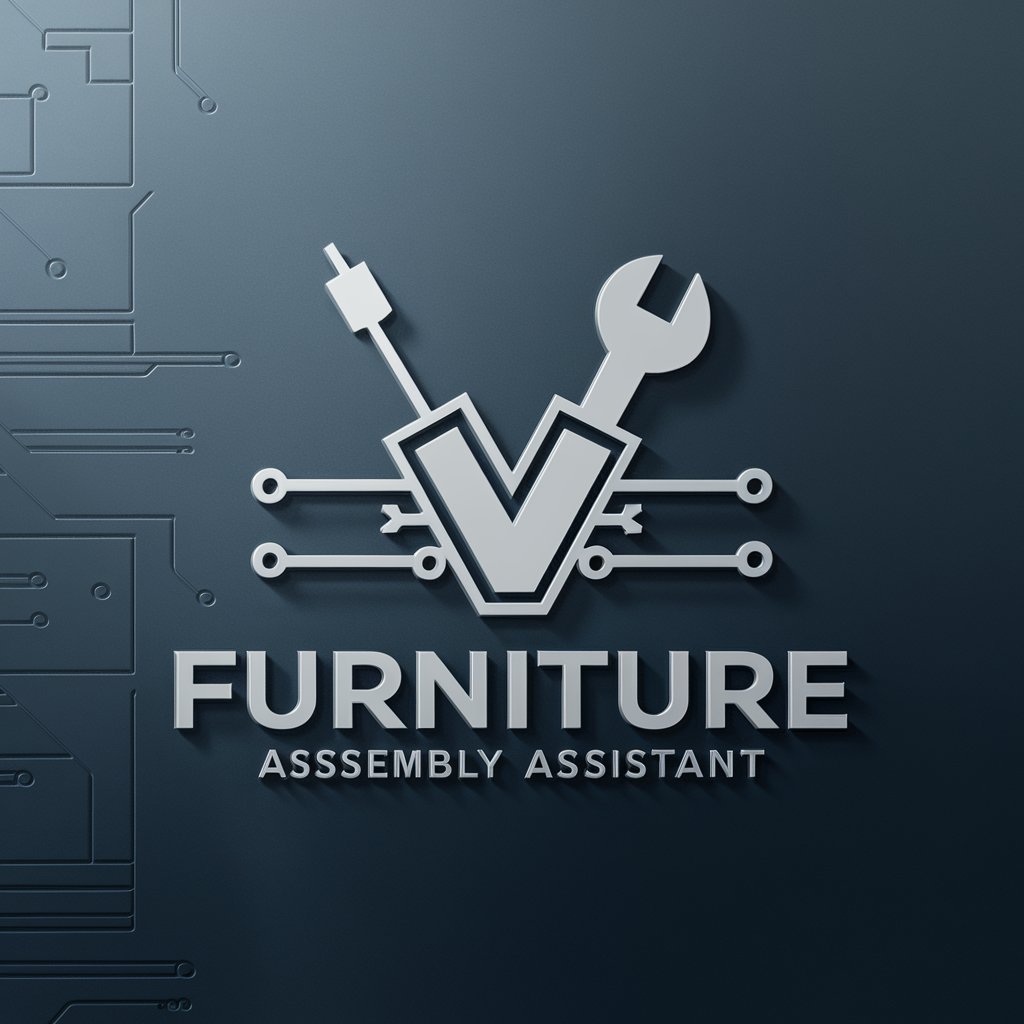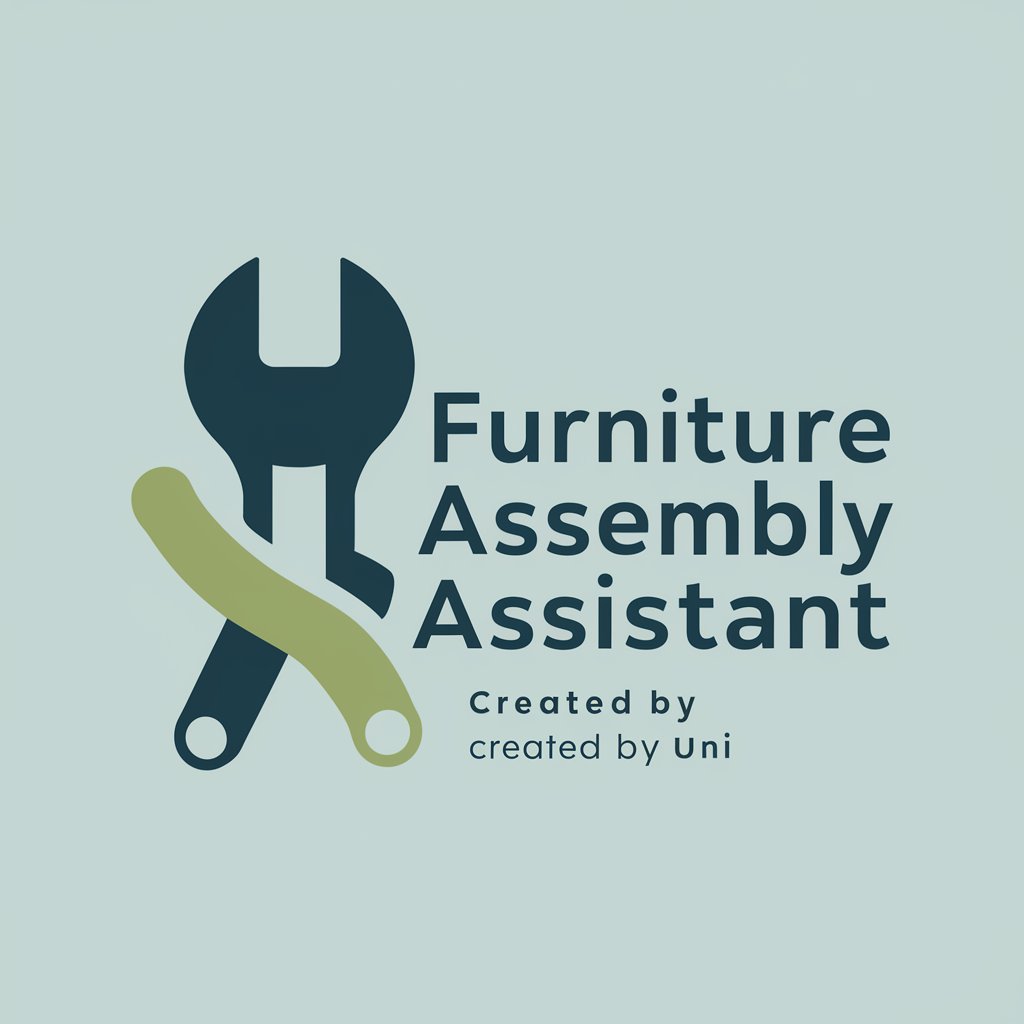DIY furniture - AI-Powered Design Assistant

Welcome! Let's create something amazing together.
Craft bespoke furniture with AI ease
Design a minimalist chair that combines comfort and style, perfect for modern living rooms.
Create a step-by-step guide for building a DIY wooden bookshelf with a contemporary look.
Describe the process of selecting sustainable materials for eco-friendly home furniture projects.
Outline the best practices for painting and finishing a DIY dining table to achieve a professional look.
Get Embed Code
DIY Furniture: An Overview
DIY furniture encompasses a broad category of furniture that can be assembled, designed, or built from scratch by individuals, rather than purchased pre-made from a store. Its design purpose is to offer flexibility, creativity, and personalization in home furnishing, allowing users to tailor pieces to their specific needs, preferences, and spaces. This concept taps into the growing trend of customization and hands-on engagement in home decoration and furnishing. Examples include building a bookshelf to fit a unique nook in a living room, repurposing wooden pallets into a patio sofa, or crafting a bespoke dining table from reclaimed wood. These scenarios illustrate the versatility of DIY furniture, highlighting its ability to adapt to various styles, budgets, and skill levels, fostering a deep sense of accomplishment and ownership. Powered by ChatGPT-4o。

Core Functions of DIY Furniture
Customization
Example
Crafting a corner desk to fit a specific room layout.
Scenario
A homeowner needs a work desk that fits into an irregularly shaped home office. Traditional desks do not meet their needs, so they decide to design and build a custom solution that perfectly fits the space, enhancing functionality and aesthetics.
Cost Efficiency
Example
Using reclaimed wood to create a coffee table.
Scenario
An individual wants a rustic coffee table but finds retail prices prohibitive. By sourcing reclaimed wood from old buildings or pallets, they build a unique table at a fraction of the cost, demonstrating how DIY furniture can be both budget-friendly and environmentally conscious.
Sustainability
Example
Upcycling an old door into a dining table.
Scenario
In an effort to reduce waste and promote sustainability, a person transforms an old door destined for the landfill into a stylish dining table. This project showcases the potential of DIY furniture to repurpose materials and reduce environmental impact.
Skill Development
Example
Building a set of shelves as a beginner woodworking project.
Scenario
A novice woodworker decides to tackle a simple shelving unit project to improve their skills. This undertaking not only results in a functional piece of furniture but also enhances their woodworking abilities, illustrating the educational aspect of DIY furniture.
Who Benefits from DIY Furniture?
Home Improvement Enthusiasts
Individuals passionate about personalizing their living spaces, undertaking home improvement projects, and expressing their creativity through their home decor. They benefit from the ability to create one-of-a-kind pieces that reflect their personal style and fit their specific needs.
Budget-Conscious Consumers
People looking to furnish their homes on a budget, seeking cost-effective alternatives to retail furniture. They are attracted to DIY furniture for its potential to significantly reduce costs through self-made projects or repurposing materials.
Sustainability Advocates
Eco-conscious individuals prioritizing sustainability and environmentally friendly practices in their daily lives. They are drawn to DIY furniture for its emphasis on upcycling, recycling, and minimizing waste, aligning with their values of reducing environmental impact.
Hobbyists and Crafters
Those who enjoy woodworking, crafting, and DIY projects as hobbies. This group finds satisfaction in the process of creating and building, valuing the skill development and the tangible results of their work.

How to Use DIY Furniture Effectively
Start Your Journey
Begin by visiting yeschat.ai for a seamless introduction to DIY furniture, offering a free trial with no login or subscription to ChatGPT Plus required.
Identify Your Project
Consider what you need. Whether it's creating custom furniture designs, drafting step-by-step building instructions, or generating material lists, have a clear goal in mind.
Leverage Templates
Explore available templates or guides for various furniture projects. These can provide a solid foundation, ensuring you don't miss important details.
Customize Your Design
Utilize the tool's customization features to tweak the templates according to your specific measurements, materials, and design preferences.
Execute Your Plan
With a detailed plan in hand, gather your materials and start building. Remember, the precision of your preparation will reflect in the quality of the finished product.
Try other advanced and practical GPTs
Furniture Assembly Assistant
Assemble Furniture with AI Ease

Furniture Finishers Assistant
Crafting Excellence with AI

Furniture Assembly Assistant
Streamlining Furniture Assembly with AI

Outdoor furniture
Empowering Writing with AI

Modern furniture
Elevate Creativity with AI-Powered Writing

My Short
Craft impactful 60-second scripts with AI

Francis Furniture
AI-powered Interior Design at Your Fingertips

Furniture Flip Restyler
Transform Your Furniture with AI

Furniture Fein
Discover, Visualize, Furnish: AI-Driven Furniture Discovery

Modular balcony furniture
Transform your balcony with AI-powered modular furniture.

Furniture stores
Revolutionizing furniture shopping with AI.

Strategic Furniture Marketing Bot
Empower Your Furniture Brand with AI

FAQs About DIY Furniture
What exactly can DIY Furniture help me create?
DIY Furniture assists in designing and planning a wide range of furniture projects, from simple bookshelves to intricate heirloom pieces, providing tailored instructions and materials lists.
Do I need prior design experience to use DIY Furniture effectively?
No, you don't need previous design experience. DIY Furniture is designed to guide users of all skill levels through the furniture creation process with intuitive tools and templates.
Can DIY Furniture suggest the best materials for my project?
Yes, based on your project specifics, DIY Furniture can recommend the most suitable materials, considering durability, aesthetics, and budget.
Is it possible to save and modify my projects later?
Absolutely. Your projects can be saved and revisited for future modifications, allowing for iterative design improvements over time.
How does DIY Furniture ensure the safety of the furniture designs?
DIY Furniture incorporates design principles that prioritize safety and stability, advising on best practices and materials to ensure the furniture is both durable and safe.
